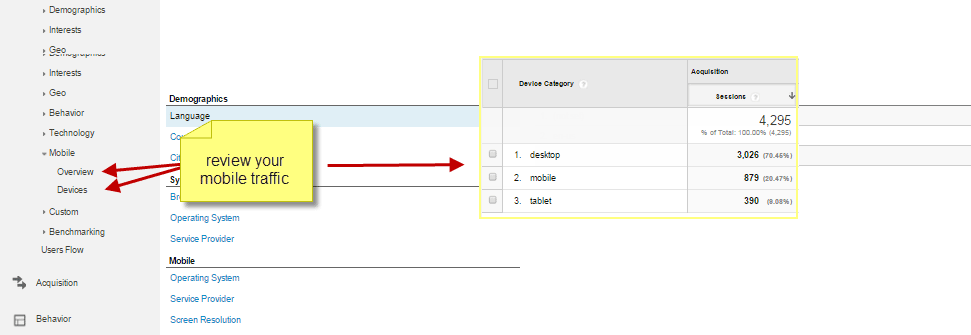You think that your clients don’t use their mobile phones to find you but they do. Have you ever looked at your website analytics to see what device your potential clients are using? Go ahead and do it – you may be surprised.

Recently ComScore did a study on the percentage of mobile phone users who have smartphones and how they use them. Their findings are interesting.
According to ComScore’s results:
81% of Canadians have a smartphone
32.2% use their phone and watch television at the same time
➲ Canadians are using smartphones for a variety of shopping (not just retail) behaviours including making mobile commerce transactions (buying something, banking).
Examples of retail usage include:
- Making shopping lists
- Finding a store location
- To find coupons and deals
- Purchasing goods and services
- Checking product availability
- Comparing product prices
- Researching product features
- All of which are things they have done and still do on their desktop computer.
➲ More usage by women – 52% who are 55+ and have an average household income of less than $50,000 (Note: women are great candidates since they use their smartphones for finding coupons and discounts and for joining loyalty programs.)
Reference: http://mobilesyrup.com/2015/03/27/comscore-canada-smartphone-android-apple-os-market-share/
It makes you stop and consider using mobile marketing for your business, doesn’t it?
There’s no doubt that Canadians are participating in the mobile market. The question is whether and how your business is reaching out to them.
How can a small business use mobile marketing?
Whether you have a retail “bricks and mortar” business or provide a service to buyers, you need to use mobile marketing. Here are several examples of how to make use of it. These are all things you’ve done using traditional methods of marketing such as signage or ads in daily newspapers but now you can do them with mobile.
Bricks and mortar businesses
- A restaurant can post seasonal menus, daily specials and/or coupons to entice especially those who are walking by. Twitter campaigns can drive patrons into the doors on slow nights. Birthday campaigns can be offered to regulars.
- An independent local movie theatre can do promo shows in facebook offering movie discounts or free or discounted snack pack. They drive visitors to download a QR Code/Bar Code to be scanned at the theatre box office. That information also collects more data from the patrons, which can be then used for future marketing efforts.
- Fitness centre, instructors can post class schedules, allow clients to get preferred reservation listings for special services like massage, fitness training, training assessments, cancellation texting and promo campaigns to obtain email addresses to send “Healthy Living” newsletter.
Service businesses
- A business coach can promote their workshop online using social media
- A dentist or a hairdresser can remind one of an appointment using text messages
- A health coach or a personal trainer can develop a wellness app with a list of “what to do to be healthy”
- We get news on smartphones AND so do reporters. They also use them for their notes. (Do you watch the news on TV? Reporters have their notes on smartphones.)
- A not-for-profit organization can have an app for donation (Remember the Haiti earthquake in 2010?)
Even myself as as a web designer can use it. Let’s say that I’m out on the road and get a message from a client to fix something on their site. I can check the status and if it needs changes I can go into it immediately and make them.
Another mobile usage case study that I found online is how IKEA has created an app where customers can take a picture of a place in their house and virtually ‘install’ Ikea furniture to see how it ties in with their other furniture.
The bottom line is to take every promotional activity and make sure it’s in two places – offline (traditional) and online.
When choosing a mobile strategy to implement, focus on delivering great customer experience! Click To Tweet
Best practices for creating mobile friendly content
Read my post called “Today’s the day! Make your website mobile friendly according to Google” for more detail.
- Good mobile usability and a great design interface are imperative.
- Has big clear buttons for navigation and linking.
- Speed, images and design elements re-size appropriately so there is no squeezing, pinching or zooming in to view.
Thus we need to be prepared to handle our customers whether they be shopping, looking for product support, responding to service issues or searching for a new supplier. Prospects/ customers expect you to be available when they want you (be sure to communicate YOUR availability)!
Tell me what you do for mobile marketing. Do you tweet? Promote a workshop via facebook or google+?
— photo credit:iPhone ad in Singapore via photopin (license)

